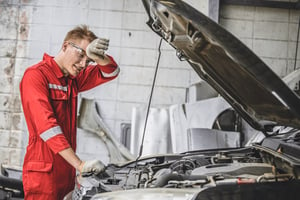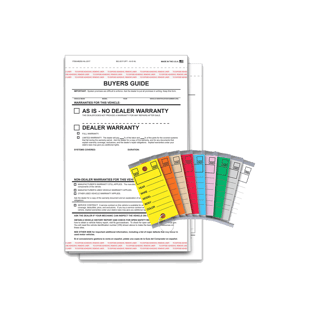
Beating the Heat: 7 Safety Tips for Staying Cool on the Job
As we start getting into the summer months and temperatures soar, preparing to work during hot weather stretches becomes crucial for maintaining a safe and productive work environment. Since we have had a traditional spring (cool, rainy, low humidity) we are facing a big temperature swing. The problem with these big swings in temperature, humidity, and heat index is that we do not have time to acclimate to the conditions. You become partially acclimated around one week and full acclimation takes about two weeks. OSHA has started to make heat-related illnesses a top priority as the dog days of summer are becoming more frequent and lasting longer.
PARTNER SPOTLIGHT
Dealer Management System, Computer Technology, Media/Advertising, Automotive Auction, F & I/Aftermarket Products, Automotive Technology Training & Compliance
 A NHADA Gold PARTNER
A NHADA Gold PARTNERComputer Technology, Automotive Shop Equipment, Environmental Services
 A NHADA Platinum PARTNER
A NHADA Platinum PARTNERF & I/Aftermarket Products, Automotive Technology Training & Compliance, Environmental Services
.png?width=150&name=corp_logo_horz_on_light_with_trademark_symbol_1200w%20(002).png) A NHADA Diamond PARTNER
A NHADA Diamond PARTNERF & I/Aftermarket Products, Financial Services, Automotive Technology Training & Compliance
 A NHADA Diamond PARTNER
A NHADA Diamond PARTNERBelow you can find the actions you should take to help reduce the impact that heat can have on your employees:
Plan:- Monitor weather and the heat stress index.
- Identify areas and tasks that have high heat exposures, duration of exposure, and intensity of physical labor performing those tasks.
- Have a cool area where workers can receive relief from the hot temperatures such as a break room, office, or service waiting area that has either A/C or fans where airflow is better.
- Have cool water or electrolyte drinks available to keep the worker cool and hydrated.
- Have fans blowing in the shop to help circulate the air so there is constant airflow.
- Create a buddy system where workers and/or managers monitor signs and symptoms of heat stress.
- Develop a heat emergency plan in case an employee needs medical assistance.
- Allow employees to take breaks in a cooler area where their body temperature can lower.
- Depending on the heat index more breaks will be needed to ensure the worker's body temperature doesn’t reach heat stress/stroke levels.
- Ensure workers have access to cool drinkable water. Encourage workers to take frequent and small sips regularly.
- Electrolytes replenishing drinks are encouraged as well to help maintain and replenish any electrolytes lost due to sweating.
- Cooling Vests. This helps keep the core temperature low.
- Lightweight breathable clothing. This helps with cooling and moisture wicking.
- Personal fans. This helps with increasing airflow in the worker's personal space.



















.png?width=150&name=Ally_Final%20Logos%20and%20Pairings_11.14.2018-01%20(2).png)


-2.png?width=150&name=Wipfli%20Logo%20Blue%20RGB%20(1)-2.png)


.jpg?width=150&name=NHADA_Partner_FTR_Img_NHADA_Insurance%20(1).jpg)


.jpg?width=150&name=NHADA_Partner_FTR_Img_JMA(1).jpg)






